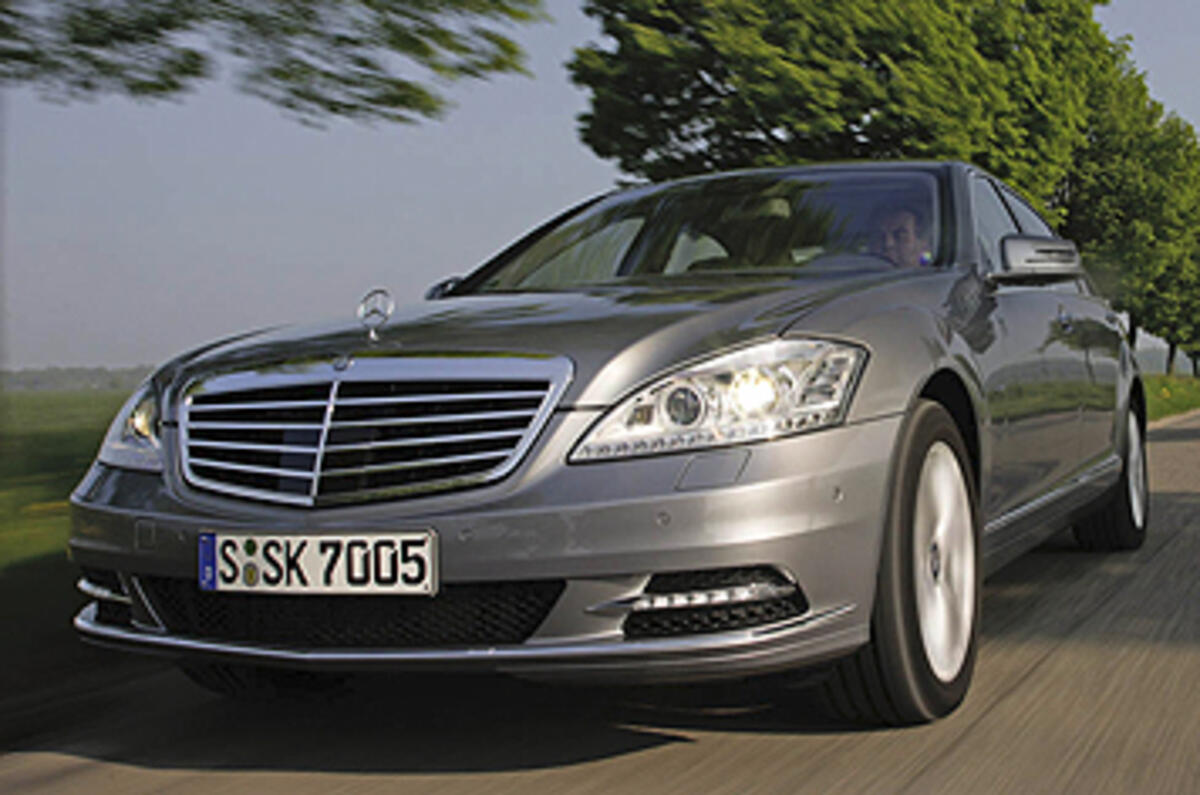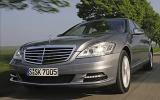What is it?
This is the facelifted Mercedes S-class, which the German company describes as the “original reference point in the luxury class”. Judging by the performance of the S 350 CDI tested here, we wouldn’t disagree.
The six-cylinder turbodiesel that powered the popular S 320 CDI has been uprated and now puts out 199g/km of CO2 and achieves 37mpg combined, an improvement of 21g/km and 3mpg.
Aerodynamic improvements, low-resistance tyres and modifications to the seven-speed auto ’box account for the environmental improvements.
What’s it like?
As effortless and cosseting as ever. New speed-sensitive variable-ratio steering and a torque-vectoring brake system make turn-in sharper, and though the weight and size of the S-class are always noticeable, it’s easy to feed accurately down a winding road or through traffic.
Ride quality is exemplary, and still a class benchmark. Even the most severely broken road surface is smoothed into submission by the Airmatic air suspension.
Blog: Why isn't my living room more like an S-class?
The S 350 CDI engine is equally effective. It’s well matched to the seven-speed ’box, and most users won’t ever find the need to change out of D thanks to the spread of torque, though using the paddle shifts is a satisfying experience on the right road.
Still, the 3.0-litre engine does grumble intrusively under heavy acceleration and it can feel strained in the higher echelons of the rev range, so it’s best to just sit back and enjoy the cruising ability.
The driver need do very little to achieve that, because there are now even more electronic marvels to keep the S-class at the forefront of the technology revolution.
Lane Assist vibrates the steering wheel if you go over a white line without signalling, adaptive high-beam headlights automatically sense oncoming traffic and dip themselves, active body control compensates for crosswinds, the Distronic cruise control has been improved, and to stop you falling asleep, Attention Assist monitors 70 different parameters to sense and warn when the driver needs to take a break.
Should I buy one?
Do you need to ask? Even if the thoroughly impressive (and mostly optional) gadgets that make the S-class a winning luxury saloon don’t sell it to you, rest assured that even in standard form the Mercedes is still the one to beat.
























Join the debate
Add your comment
Re: Mercedes S-Class S350 CDI
I fully agree with Colonel Snappy. Are we forgetting another car in the same class that uses a great deal of aluminum? The Audi A8? When a car gets that big and has electric motors to power just about everything from seats to massagers to door closing aids, I would be truly amazed if the next gen XJ (fully optioned) could weigh a single gram south of 1800 kg.
I am actually looking for a 1988 - 1990 Mercedes 560 SEC to invest in and restore. I would guess that the car would last at least another 15 years if driven regularly and maintained to manufacturer's standards without really breaking the bank. I don't think the same could be said for this current gen S-Class 20 years from now ......... all that electronic wizardry and the lightweight components would probably cost a fortune to replace.
Re: Mercedes S-Class S350 CDI
No. I mean make the things it puts in there relevant and necessary. Put more of their resources into designing a lightweight, cutting edge structure not just through a change of primary material but design 'genius'.
This is the sort of thing that needs to filter down to the rest of the motoring community nowdays, not just designing a 'clever' car that drives itself.
Re: Mercedes S-Class S350 CDI
Totally agree!
Like Lexus, Merc is basically preparing us for when the Car drives itself.
1. Lane Assist knows where the white lines are on the motorway, meaning Merc can tweak the system to keep the car driving straight. VW and Lexus already has a system that self steers during parking, so this won't be hard for Merc.
2. Adaptive High Beam Assist means driver doesn't even have to touch headlights (not a good thing IMO)
3. Crosswind compensating ABC - again, no driver intervention needed during crosswinds when the car is driving itself.
4. Distronic Cruise - Accelerates, brakes or keeps car at constant speed and distance behind car in front.
The only obstacle to this "car drives itself" tech from mass market is that humans feel naturally uncomfortable at not having any control, and putting all their trust in electronics. Falling asleep whilst the car drives itself is a scary thought, but I guess Merc could argue that Attention Assist would prevent this. I give it <10 years before legislation is passed allowing cars total control, at least on Motorways. Afterall, an Airbus can take-off, fly to its destinantion whilst avoiding other aircraft and bad weather, then land itself safely. Pilots only take-off and land because they need something physical to do. It will be a sad day when all this happens to cars.